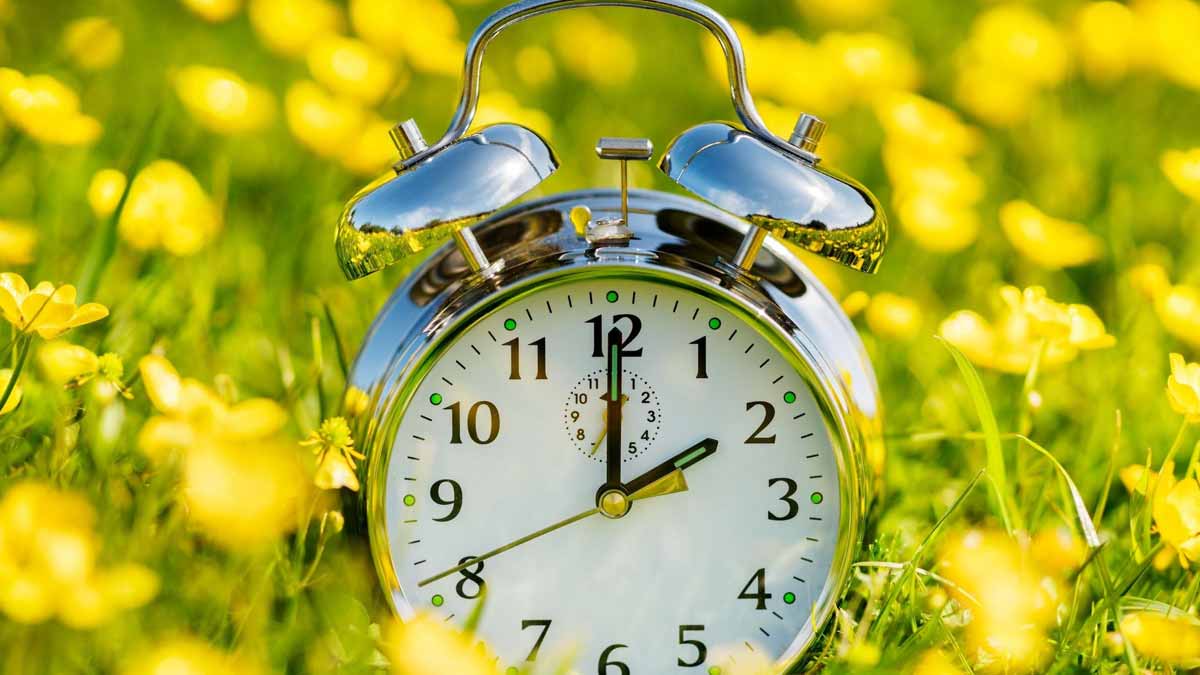Crisp evenings and early twilights signal a shift you can set by your bedside. As leaves turn and the air sharpens, the schedule that shapes mornings and nights is about to adjust. This guide explains when clocks move, what you gain, and why it happens, so time change feels clear, not confusing. You’ll also see who follows the switch and which places opt out, plus the simple way it works.
What daylight saving time is and when it runs
Daylight saving time shifts the clock to stretch usable light in the evening. Many countries, and most of the United States, still follow this seasonal adjustment, although critics say the practice should end. As days shorten and sunsets slide toward about 6 p.m., the yearly fall back approaches.
By law, the system spans about eight months. Under the Uniform Time Act of 1966, it begins on the second Sunday in March. It ends on the first Sunday in November. In 2025, that window runs from March 9 through November 2, matching the federal rule precisely.
During this period, clocks read later sunrises and sunsets, helping evening routines and outdoor time. When the schedule closes, we return to standard time, which restores earlier mornings. Understanding how this time change operates sets up the simple steps you will take as the date draws close.
What happens when clocks fall back on November 2, 2025
Daylight saving time ends on Sunday, November 2, 2025, at 2 a.m., when clocks reset to 1 a.m. That shift makes sunrise and sunset arrive earlier on the clock. It also yields a bonus sixty minutes, often felt as extra sleep, a calmer start, or more weekend flexibility.
Spring brings the familiar forward jump. On that morning, the clock leaps ahead by one hour, so people notice a lost hour right away for most. The Farmer’s Almanac says the idea is brighter summer evenings and brighter winter mornings. That is why the fall step often feels easier.
If you want local detail, check tools that list your community’s sunrise, sunset, and daylight span. Those figures help plan commutes and school timing. Knowing this time change lands overnight, you can set devices beforehand. Then wake up with the correct display across phones, ovens, and dashboards.
Benefits, risks, and how mornings and evenings feel
Supporters of daylight saving time prefer brighter evenings for errands, sports, and outdoor time after work. Later sunsets can boost foot traffic while families enjoy parks, shops, and commutes home. Opponents say darker mornings complicate school safety and sleep, so a seasonal or permanent return to earlier dawns is better.
According to Save Standard Time, standard time aligns more closely with human circadian rhythms and morning visibility. They argue that earlier sunrises help alertness, especially for children heading to school. Others press the opposite case: keep longer light at day’s end, citing convenience, activity, and energy benefits many households recognize.
Recent national voices reflect the split. Donald Trump said in December 2024 he would work to end daylight saving and make standard time permanent. In March, he called the issue “50/50.” In April, he urged Congress to make DST permanent. That flip mirrors the debate about this time change.
Where laws stand now on time change policy
Congress has weighed permanent daylight saving more than once. The Sunshine Protection Act cleared the U.S. Senate in 2022 but stalled in the House. Lawmakers reintroduced it in January 2025, seeking year-round DST for all states. It has not passed. The current schedule remains in force.
States also test their own approaches. Pennsylvania advanced ideas in recent years, including a 2023 bill for year-round daylight saving that never passed. In March, the Senate approved a resolution urging Congress to end twice-yearly clock shifts. That move aligned with growing frustration over semiannual disruptions.
At least twenty-nine states have floated proposals to stop the switching. Some would make DST permanent, others would lock in standard time. Given federal limits, most need Congressional action before any sweeping time change becomes uniform. The familiar autumn adjustment still arrives each year while debates continue.
Who follows daylight saving and who skips the time change
Most states still observe daylight saving, including Pennsylvania, New Jersey, and Delaware. However, Hawaii opts out, and parts of Arizona stay on standard time year-round. U.S. territories skip the switch. These include American Samoa, Guam, the Northern Mariana Islands, Puerto Rico, and the U.S. Virgin Islands.
Seasonal light continues transforming following the fall shift. The winter solstice arrives on Sunday, December 21, 2025. It delivers the briefest day annually, with approximately nine hours and seventeen minutes of daylight. Beyond that point, daylight duration progressively increases as the deep-winter arc slowly rebounds.
Planning remains easier with precise sunrise and sunset times. Use reliable tools to see your community’s daylight span, then adjust routines as needed. As devices handle much of the update, this time change still rewards a quick manual check.
Staying steady as the clocks shift
Use the seasonal switch as a quick audit of routines. Prioritize consistent bed and wake times, seek morning daylight, and taper evening screens to steady your energy. If you juggle caregiving, transit, or cross-time-zone meetings, communicate plans early and add a small buffer this week. Whatever happens in policy, your approach can stay pragmatic: protect sleep, anchor key tasks, and adjust gently rather than all at once. The calendar moves on a set track; your well-being moves best on a steady one.
